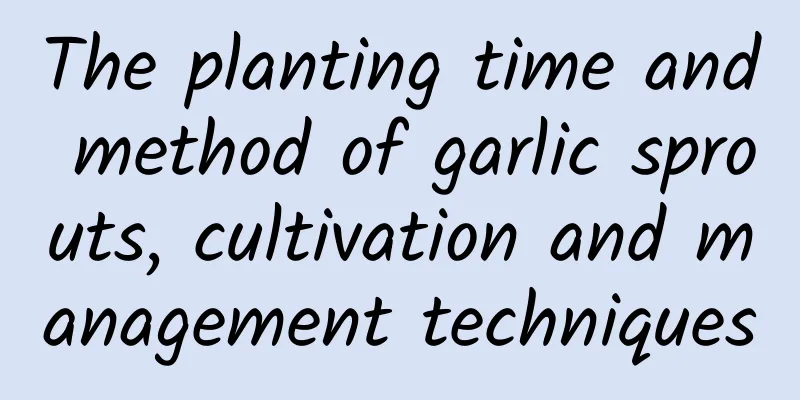How and when to plant small green vegetables

Planting time of small green vegetablesGreen vegetables can be grown all year round, but the best planting time is in autumn and winter. It is better to grow them indoors in the north in winter. Green vegetables can be planted in March in spring, and topdressing should be done once after planting. In addition, the plants are prone to insect pests, so pay attention to preventing aphids in March and spray pesticides as early as possible. Green vegetables can be sown in June-August and spread evenly. The amount of seeds used needs to be determined according to the purpose of planting. If the temperature is high, use a sun net to cover the entire process of cultivation. In addition, green vegetables are prone to diseases and pests, so insect-proof nets can be used to achieve the purpose of using less or no pesticides. Green vegetables can be transplanted in autumn from early September to early November, with a plant spacing of 20×25 cm. After transplanting, they can be watered thoroughly once, and the first topdressing should be carried out after the plants grow back to life. In case of drought, water or irrigate in time to prevent aphids and viral diseases as early as possible. Wintergreen vegetables can be transplanted from early November to the end of January of the following year. They can be planted deeply and densely. The maintenance method is basically the same as that of spring cultivation. Strengthen cold-proof measures and use non-woven fabric floating cover. How to plant small green vegetablesChoose a piece of land, renovate it in advance, dig about 10 cm deep, apply an appropriate amount of base fertilizer to the soil, level the soil, mix the seeds with fine soil and evenly sow them on the soil, sprinkle a thin layer of soil on the seeds, water them thoroughly, cover them with a layer of film, and they will germinate in about 4 or 5 days. 1. Soil preparation: After harvesting green vegetables, the soil needs to be renovated, sufficient base fertilizer should be applied, farmyard manure, compound fertilizer, general calcium should be applied, and then the soil should be prepared. The amount of sowing depends on your purpose. It can be broadcast or spot-seeded. 2. Thinning and transplanting: Thinning can be carried out when the pakchoi grows one pair of true leaves, and the second thinning can be carried out when it grows two pairs of true leaves. Transplanting can be carried out when it grows 5-6 leaves. The distance between seedlings should be about 23 cm in autumn and about 17 cm in winter. 3. Pest and disease control: The main diseases of pakchoi are black spot, white spot and anthrax, which can be controlled with cypermethrin, thiophanate-methyl and carbendazim. Pests include aphids, diamondback moth, cabbage looper and yellow striped flea beetle, which should be discovered and controlled in time. |
Recommend
How do pitcher plants overwinter?
Temperature requirements for wintering Nepenthes ...
When to plant zucchini
1. Sowing time Zucchini is a vegetable that likes...
Cultivation methods and precautions of pine red plum
Farming methods soil The soil requirements of pin...
How to plant mugwort, pictures of mugwort
1. Planting method 1. Sowing time: Mugwort sowing...
The efficacy and function of Prunella vulgaris
After being dried, Prunella Vulgaris is very ligh...
How to grow coral cherry
1. Soil When growing coral cherry, try to use fer...
How to grow roses at home (different methods for indoor and outdoor use)
1. Indoor cultivation methods 1. Soil: It needs l...
What method can be used to propagate Sansevieria? Will it survive quickly?
1. Breeding Methods 1. Cuttings: Tiger Piran can ...
How to grow ginger flower
1. Soil selection Ginger flower is not very deman...
Cultivation methods and precautions of Meirenmei
How to cultivate the beauty plum soil The beauty ...
Is there any way to save the snake plant if it freezes to death?
1. Is there any hope? Tiger Piranha has very stro...
High-yield planting technology of pepper
Chili is a common seasoning vegetable in life and...
Cultivation methods and precautions of wood fragrance
1. Maintenance methods 1. Temperature: In compari...
What to do if the roots of Kalanchoe are rotten? Just cut it once and put it back into the soil and it will grow again
Basically, no plants will bloom in winter, so the...
How to cultivate red lotus
1. Soil Red lotus likes soil with good drainage a...









